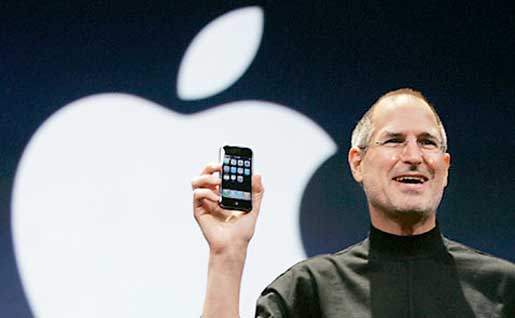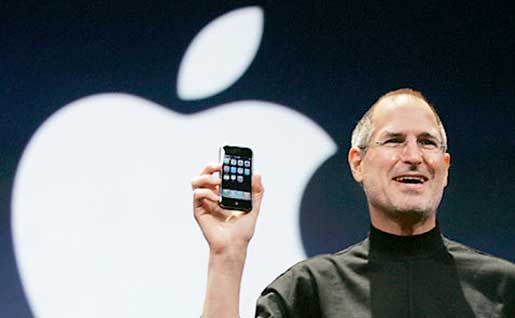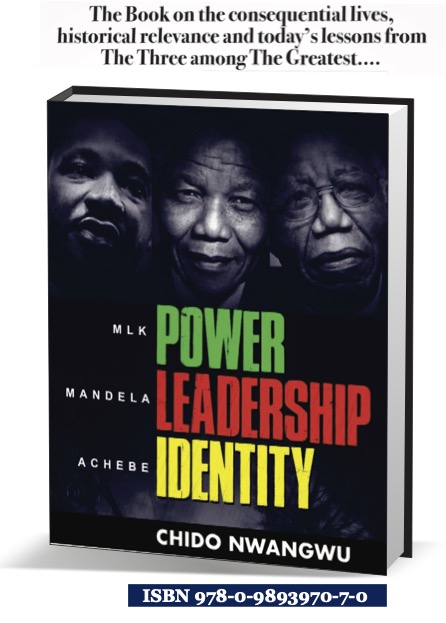iSteve, rest in peace; Apple’s future of digital living. By Chido Nwangwu, Founder & Publisher of the first U.S-based African-owned newspaper published on the internet USAfricaonline.com, CLASSmagazine, AchebeBooks.com, PhotoWorks.TV and USAfricaTV
USAfrica, October 5, 2011, Houston, Texas: Steven P. Jobs, the master of techno-cool, charismatic and richly creative, incisive and bold and snappy (where necessary), famous as new

technologies pioneer and co-founder of Apple died, a few hours ago, today October 5, 2011 at the age of 56.
“Steve’s brilliance, passion and energy were the source of countless innovations that enrich and improve all of our lives. The world is immeasurably better because of Steve”, announced Apple in his obituary. We agree, entirely.
Since I established USAfrica and its affiliated multimedia networks, they have run as Apple-powered platforms since 1992.
In honor of Steve, here’s one of the new technologies commentaries and projection I wrote about Steve and Apple on December 18, 2001, at the emergence of the iMacs, the iPods, iTunes, long before the iPhones and the iPads. It was titled as “Steve Jobs and Apple represent the future of digital living.” https://usafricaonline.com/applerocks.chido.html
With his popularization of the letter ‘i’ before gadgets/devices, I have altered the original title by adding the ‘i’: iSteve, rest in peace; Apple’s future of digital living.
——
USAfrica, December 18, 2001, Houston, Texas: Steve Jobs is truly the Technologist and Marketer of the new, digital age. The ultimate sales master. The choreographer of the most appealing and “loved” computers in the world. In some ways, he’s almost intelligently magical in the articulation of his digital products. The man has truly converged art and digital technology.
He’s the antithesis of the staid, beige Wintel-PC world. He’s iMac-like; engaging, daring, bold, colorful and full of techno-substance.
In my view, Steve Jobs’ persuasive talents, consummate skills, overall sense of business mission and the creative talents at Apple are extending the frontiers of digital magic and superior computing methods.
With Apple, computing does not really have the dry, cold formalism of a beige PC machine, the impersonal architecture (translation: lacking in personality) of the Windows-Intel machines and some of their outdated methods of computing in a digital age.
Hey, lest I forget, I got myself a special Thanksgiving gift: the latest combo-drive (dvd/cdr-w) iBook (in the picture). It’s a masterpiece, design and performance. It burns the CDs with iTunes almost like a breeze; in terms of its ease of use. It runs with the latest, robust MacOSX operating system. MacOSX has since leapfrogged the character, performance, interface and quality of computing. Again, the Windows XP is a sluggish imitation of the translucent, liquid colors of MacOSX
Jobs has led the rubbishing of the oft but misleading claims about “lack of Mac softwares.” No; not with almost 15, 000 software titles and products and lots more jumping onto the preemptive, multi-tasking, cross-platform UNIX kernel and the MacOSX.
Apple has been back for almost 40 months with significantly improved financials and leading edge technologies. Few PC users even know that the iMac sold more than their Windows-Intel laptops. Only a handful of PC and Mac users know the U.S Army, the Strategic Air Command of the U.S., the Health and Human Services and thousands of other governmental and private agencies use the Apple Mac products/machine after their Windows-Intel based servers were found to be dangerously inadequate and less secure. But who will tell the facts? That’s an issue I’ll deal with another day.
Inside and outside the MacWorld conventions and stores Macaddicts and Macfaithfuls (I’m one), are not only impressed but seem certainly thankful for better products and setting of new world standards for computing regardless of whatever platform you may have. Whether you’re running on Windows-Intel, Linux, MacOS, BeOS and all that.
Apple’s new PowerMac computers became the first in the world to run on two computer chips; ensuring a dazzling speed and exceptional performance. “This is the first personal computer in history to come with a dual processing standard,” Jobs told the group.
On the issue and misrepresentation by some non-Mac users that the Apple G3 and G4 processor speeds are lagging behind their Intel/AMD counterparts whose chips carry higher numerical values, Phil Schiller, Apple’s VP of Worldwide Marketing, took the stage to present a speed face-off between a 500 MHz G4 (Mac) and a 1 GHz Pentium III (Windows-Intel). A series of Photoshop 5.5 tasks and actions were assigned and played on the Mac and Windows-Intel machines. Significantly, the G4 computer’s Velocity Engine had the Pentium III for lunch.
More revealing are the numbers: the Mac completed all tasks in 100 seconds while the 1 GHz machine returned at 124 seconds. This caused cheers from the crowd and the comments “This means a 500 MHz G4 is equal to a 1.2 GHz Pentium III,” Jobs stated. To pile on the advantage, Jobs let a new mantra “Two brains are a better than one,” as a prelude to introducing yet another first in computing: dual-processor Power Mac G4s. “This means a dual-processor 500 MHz G4 is like a 2 GHz Pentium III, if you could even purchase [the 2 GHz Pentium III],” Jobs told the audience, “but we are delivering these today.”
Mr. Jobs and his team at Apple have followed a strategy which has almost doubled its share of the computer market since the past 32 months despite the barrage of misinformation against the Apple Macintosh.
Apple’s wireless I-Book and the I-Mac computers have not only beat the sales record of similar computers on the Windows platform, their design edge has been cited by TIME magazine and other professionals as setting the standard for the future of computing. In deed, the new line of Apple Macintosh computers have been copied by such companies as e-Machines, Dell, Gateway, and Windows designers that thay hhave all given new meaning to the words, “imitation ” as a form of flattery.
It did not work for them, though. A few weeks ago, Dell and Compaq failed to pull in good results, operational performance, customer acceptance and the marketing savvy of the iMacs that they cancelled their iMac knock-offs.
This upswing in revenue, products and sales for Apple’s have come after a decade of poor management and terrible lack of proper marketing of Apple products by some of its previous CEOs. Obviously, Apple Computer aims higher for 2002 with its products and strategy under the leadership of tech genius and iCEO Steve Jobs. Overall, I know that Apple has been delivering better and highly acclaimed technology.
On the Apple platform, in fact, I first wrote and posted this web page from my digitally wireless Apple PowerBook DVD 2000 (with its ultrasharp, 14.1-inch TFT active-matrix display, the ATI RAGE Mobility 128 video controller), computing is a joyful techno-communion which enlivens and allows me to do more (faster!) without those thousands of bugs and crashes. Ahh, lest I forget, the atrocious “you have performed an illegal operation” error and other ancient messages dogging the Windows-Intel PCs.
Jobs’ trademark jeans simplicity add to the compelling aura and personality of the Mac; all shine as one unique being. And, those glasses….
He announced on July 19, 2000, in New York, the new look, souped up and new color iMacs (my favorites are sage and snow). Apple has sold 3.7 million iMacs within 18 months. Apple aggressively dropped the price of the entry level iMac to $799.
Main event and head-turner at the July 19 event was Jobs’ introduction of the world’s first all digital computer which has no analog wiring: the G4 Cube. The shape is daring and entirely different and saves lots of space while packing lots of power. Almost one-fourth the size of most Windows-Intel PCs, it runs a Pentium-crushing 450 MHz PowerPC G4 processor. It has the power to do 3 billion calculations per second.
By the way, the iPod and the iTunes have been smashing successes, commercially and performance-wise. 1,000 songs in a card-size portable device? It’s a stereophonic and digital marvel!
Meanwhile, what next, Steve? We hear it’s the Gigawire! Giga-what? Only at Apple!
•Chido Nwangwu, Founder & Publisher of USAfrica multimedia networks, first African-owned, U.S-based newspaper published on the internet USAfricaonline.com; and recipient of several journalism and public policy awards, was recently profiled by the CNN International for his pioneering works on multimedia/news/public policy projects for Africans and Americans. http://edition.cnn.com/video/#/video/international/2010/07/29/mpa.african.media.bk.a.cnn. He traveled with and covered U.S. President Clinton’s visit to parts of Africa March-April 2, 1998. He’s writing a book on recent African immigrant experiences in America.
















